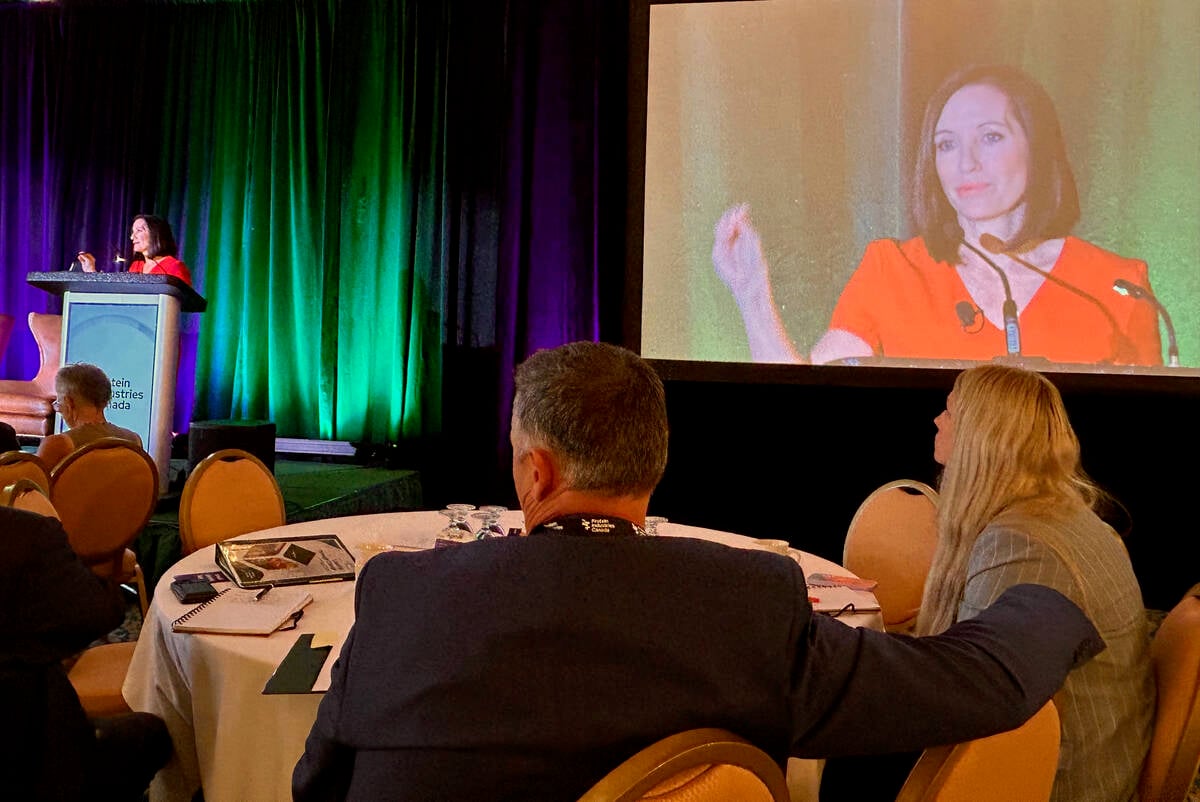It’s been said that 95 percent of horse lameness is caused by problems in the hoof.
Among the most common equine hoof ailments are hoof abscesses.
These can occur if something causes a defect in the bottom of the hoof through which bacteria enter and cause infection in the sensitive inner hoof tissues.
Since the hoof can’t expand, the pressure and infection cause severe pain.
Horses with abscesses become suddenly and severely lame.
In fact, a horse may be so lame that you might be tempted to think it broke a bone. The hoof will feel hot to the touch and digital pulses (the pulse at the back of the pastern) may be strong.
Read Also

Canada told trade crisis solutions in its hands
Canadians and Canadian exporters need to accept that the old rules of trade are over, and open access to the U.S. market may also be over, says the chief financial correspondent for CTV News.
Veterinarians use a few techniques to diagnose hoof abscesses, starting with watching the horse walk to confirm which leg is affected and possibly which part of the hoof.
Then they apply hoof testers, a large set of pincers that resemble a medieval torture device. Hoof testers are a low-tech way to isolate the affected area in the hoof because they apply pressure to a small, focused area.
Horses with an abscess should have a single painful spot, while those that are sore all over the hoof may have diffuse disease such as laminitis or a coffin bone fracture.
Vets may use nerve blocks to numb the hoof. If the horse stops limping once the freezing takes effect, it confirms that the problem originates in the hoof.
If there is any doubt, it is important to rule out other causes of severe lameness with hoof X-rays. X-rays may highlight a broken bone or coffin bone rotation seen with laminitis.
Vets treat hoof abscesses by opening the area of the hoof to relieve pressure. There may be a black spot that indicates the site of infection. The bottom of the hoof is carefully pared away until fluid and pus drain out.
It is miraculous to see a horse after its hoof abscess is opened. Before, it might be so sore that it would only touch its toe to the ground. Afterward, it walks relatively pain free.
The hoof is immediately soaked in an antiseptic solution. Finally, the hole may be packed with a poultice and bandaged to keep debris out.
Your vet may administer a tetanus booster vaccine if one hasn’t been given recently.
The bandages should be re-moved every few days so the hoof can be monitored and then soaked in Epsom salts before reapplying the bandage or a reusable hoof boot. Pain medication will help keep horses comfortable.
If the infection is cleared up, a shoe and pad will protect the hole until it can grow out completely or your farrier may fill the defect with synthetic hoof putty. It takes several weeks for the defect to completely heal.
Hoof abscesses can arise at any time but there are a few common causes. Horses and ponies with previous bouts of laminitis/founder are prone to developing abscesses. They can also result from foreign objects like nails and wire piercing the hoof and introducing bacteria. A misdirected horseshoe nail can also lead to infection.
As well, environmental factors can compromise a hoof. This usually occurs where horses are kept in wet pens and their hoofs are too wet, predisposing them to diseases, including abscesses.
Those caring for horses should provide an area where horses can stand out of the mud to allow their hoofs to dry periodically.
It is also a good idea to clean hoofs frequently and examine them for foreign objects and other signs of disease.















